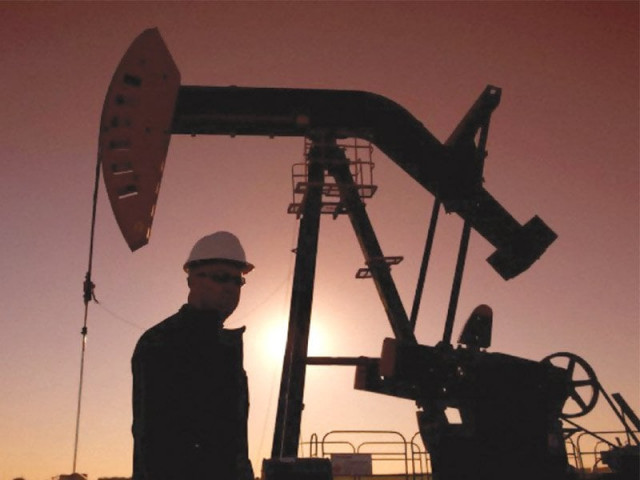Vital supplies: Though energy gets top priority, gas production edges down
Oil output rises; power generation to increase 16,564MW in four years.

Oil output rises; power generation to increase 16,564MW in four years. PHOTO: FILE
However, crude oil production grew modestly at 12% in the year, according to the Economic Survey of Pakistan 2013-14 released here on Monday.
Total gas production stood at 1,124.8 billion cubic feet during July-March 2013-14 against 1,139.2 billion cubic feet in the corresponding period of last year, the survey showed.
The share of gas supply in power production fell, forcing electricity producers to run plants on expensive furnace oil.
Gas supply to the industrial, commercial and compressed natural gas (CNG) sectors also decreased whereas fertiliser producers saw an increase in provision of gas to 19% of the total compared to 15.2% a year ago. In July-March 2013-14, power plants got 26.1% of total gas supplies, industry got 21.7%, CNG stations 7% and commercial consumers 3.1%. There was no change in gas consumption by households that amounted to 23.2%.
In the previous fiscal year, out of total supplies, power plants received 27.5%, industry 22.6%, CNG stations 8.2% and commercial users 3.3%.
Crude output
However, crude oil production posted 12% growth as it stood at 23 million barrels in July-March 2013-14 compared to 20.5 million barrels in the same period of previous year.
The country imported 44.9 million barrels of crude in the nine-month period as opposed to 40 million barrels in the same period of last year, a rise of 11%.
Transport and power sectors were the biggest consumers of oil. Power plants had a share of 42.8% in total oil supplies compared to 41% last year. However, demand from the transport sector remained stagnant at 48.7% as there was a negligible shift to CNG.
Power supply
According to the survey, there was a decline in the share of electricity in energy supply as it dropped from 15.5% in 1995 to 12.9% in 2013. The installed capacity in the Pakistan Electric Power Company (Pepco) system was 22,812 megawatts in June 2013 with hydroelectric power contributing 6,773MW, thermal 15,289MW and nuclear 750MW.
In terms of percentage, hydroelectric power accounted for 29.7% of the power production capacity, thermal 67% and nuclear 3.3%.
However, only around 50% of electricity is generated out of the installed capacity, thanks to recovery of less than billed amount, inefficiency, wear and tear of plants and inappropriate fuel mix.
In July-March 2013-14, power generation rose 11% compared to the corresponding period of last year. The government expects to add 16,564MW to the national grid in the next four years with the help of new projects, which would eliminate outages in the country.
High transmission and distribution losses have become a big bottleneck in the way of ending power load-shedding. Sukkur Electric Power Company (Sepco) leads others in T&D losses which stand at around 40% with no apparent improvement made in this case over the last one year.
Published in The Express Tribune, June 3rd, 2014.
Like Business on Facebook, follow @TribuneBiz on Twitter to stay informed and join in the conversation.


















COMMENTS
Comments are moderated and generally will be posted if they are on-topic and not abusive.
For more information, please see our Comments FAQ